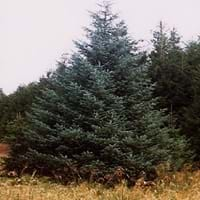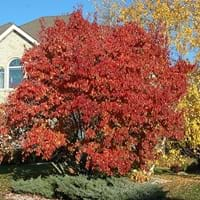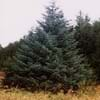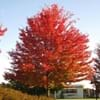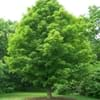Life Span
Perennial
Perennial
Origin
Eastern Asia
Eastern Europe, Western Asia
Types
Black Spruce, Norway Spruce, Colorodo Spruce
Not available
Number of Varieties
Not Available
Habitat
By seashore, Humid climates, Temperate Regions
disturbed sites, Forest edges, gardens, Open Forest, Roadsides, Swamps, Urban areas
USDA Hardiness Zone
6-8
3-7
Sunset Zone
A3, 2a, 2b, 3a, 3b, 4, 5, 6, 7, 8, 9, 10, 12, 14, 15, 16, 17, 18, 19, 20, 21, 22, 23, 24
1a, 1b, 2a, 2b, 3a, 3b, 4, 5, 6, 7, 8, 9, 14
Habit
Oval or Rounded
Oval or Rounded
Flower Color
Red
Light Green, Ivory
Flower Color Modifier
Bicolor
Bicolor
Fruit Color
Red, Green
Red, Crimson
Leaf Color in Spring
Green, Light Green
Green
Leaf Color in Summer
Green
Green
Leaf Color in Fall
Red, Crimson
Yellow, Red, Orange, Gold, Crimson
Leaf Color in Winter
Not Available
Not Available
Leaf Shape
Acicular
Lobed
Plant Season
Spring, Summer, Fall, Winter
Spring, Summer, Fall
Sunlight
Full Sun, Partial Sun, Partial shade
Full Sun, Partial Sun
Growth Rate
Medium
Medium
Type of Soil
Clay, Loam, Sand
Loam
The pH of Soil
Acidic, Neutral
Acidic, Neutral, Alkaline
Soil Drainage
Average
Well drained
Bloom Time
Early Spring, Spring, Late Spring, Early Summer
Early Spring, Spring
Tolerances
Heat Tolerance, Humidity, Light Frost
Drought, Pollution, Salt, Shade areas, Soil Compaction
Where to Plant?
Ground
Ground
How to Plant?
Seedlings, Spores
Layering, Leaf Cutting, Seedlings, Stem Cutting
Plant Maintenance
Medium
Low
Watering Requirements
Needs less watering
Keep ground moist, Medium, Requires consistently moist soil
In Summer
Lots of watering
Lots of watering
In Spring
Moderate
Moderate
In Winter
Average Water
Keep Slightly Dry
Soil pH
Acidic, Neutral
Acidic, Neutral, Alkaline
Soil Type
Clay, Loam, Sand
Loam
Soil Drainage Capacity
Average
Well drained
Sun Exposure
Full Sun, Partial Sun, Partial shade
Full Sun, Partial Sun
Pruning
Prune when young, Remove dead branches
Pruning in early stages, Remove damaged leaves, Remove dead branches, Remove dead leaves
Fertilizers
slow-release fertilizers
All-Purpose Liquid Fertilizer, Bonsai
Pests and Diseases
Aphids, Birds, Snails
Aphids, Borers, Honey fungus, Red blotch, Soft scales
Plant Tolerance
Heat Tolerance, Humidity, Light Frost
Drought, Pollution, Salt, Shade areas, Soil Compaction
Flowers
Insignificant
Showy
Flower Petal Number
Single
Not Available
Foliage Texture
Fine
Medium
Foliage Sheen
Matte
Glossy
Attracts
Ants, Fruit Bats, Snails, Squirrels
Deers, Not Available, Rabbits, Squirrels
Allergy
Constipation, Diarrhea, Dizziness, Sore eyes
Not Available
Aesthetic Uses
Showy Purposes
Beautification, Cottage Garden, Showy Purposes
Beauty Benefits
For treating wrinkles, Making cosmetics, Speed hair growth
Not Available
Edible Uses
Sometimes
Yes
Environmental Uses
Agroforestry, Air purification, Nesting sites for birds, soil stabilisation
Agroforestry, Wildlife, Windbreak
Medicinal Uses
anti-inflammatory, Back pain, Emollient, Immunity, Obesity
Astringent
Part of Plant Used
Leaf Stalks, Root
Fruits, Leaves
Other Uses
Constructing Boats, Making piano frames, Used as fuel, Used in Furniture, Used in making musical instruments, Used in paper industry, Used in pencil industry
As a tea substitute, Florist trade and landscaping, Food for animals, Showy Purposes
Used As Indoor Plant
No
No
Used As Outdoor Plant
Yes
Yes
Garden Design
Container, Feature Plant, Mixed Border, Topiary / Bonsai / Espalier
Feature Plant, Foundation, Hedges, Mixed Border, Screening / Wind Break, Street Trees
Botanical Name
ACER palmatum 'Osakazuki'
Acer ginnala
Common Name
Japanese Maple, Osakasuki Japanese Maple
Amur Maple
In German
Fichten
Amur-Ahorn
In French
Picea
érable de l'Amour
In Spanish
Picea
arce de Amur
In Greek
Spruce
Amur Maple
In Portuguese
Picea
de bordo amur
In Polish
Świerk
klon amur
In Latin
Picea
amur acernis
Phylum
Pinophyta
Magnoliophyta
Class
Pinopsida
Magnoliopsida
Family
Aceraceae
Aceraceae
Clade
Not Available
Angiosperms, Eudicots, Rosids
Tribe
Not Available
Not Available
Subfamily
Piceoideae
Hippocastanoideae
Season and Care of Sitka Spruce and Amur Maple
Season and care of Sitka Spruce and Amur Maple is important to know. While considering everything about Sitka Spruce and Amur Maple Care, growing season is an essential factor. Sitka Spruce season is Spring, Summer, Fall and Winter and Amur Maple season is Spring, Summer, Fall and Winter. The type of soil for Sitka Spruce is Clay, Loam, Sand and for Amur Maple is Loam while the PH of soil for Sitka Spruce is Acidic, Neutral and for Amur Maple is Acidic, Neutral, Alkaline.
Sitka Spruce and Amur Maple Physical Information
Sitka Spruce and Amur Maple physical information is very important for comparison. Sitka Spruce height is 460.00 cm and width 460.00 cm whereas Amur Maple height is 460.00 cm and width 300.00 cm. The color specification of Sitka Spruce and Amur Maple are as follows:
Sitka Spruce flower color: Red
Sitka Spruce leaf color: Green and Light Green
Amur Maple flower color: Light Green and Ivory
- Amur Maple leaf color: Green
Care of Sitka Spruce and Amur Maple
Care of Sitka Spruce and Amur Maple include pruning, fertilizers, watering etc. Sitka Spruce pruning is done Prune when young and Remove dead branches and Amur Maple pruning is done Pruning in early stages, Remove damaged leaves, Remove dead branches and Remove dead leaves. In summer Sitka Spruce needs Lots of watering and in winter, it needs Average Water. Whereas, in summer Amur Maple needs Lots of watering and in winter, it needs Keep Slightly Dry.
